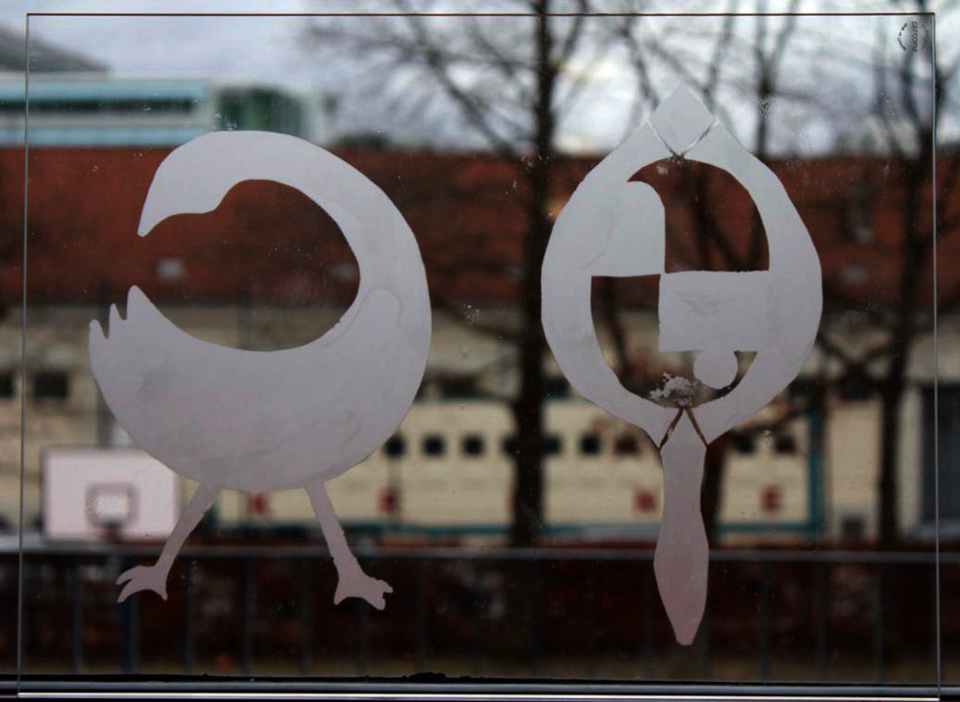After the visit of the Ghanaian team in Munich in November 2019 and their introduction of Adinkra Symbols the pupils started an artistic project based on this experience. The result were exhibited at the school. Please read the report of the teacher, Tim Proetel:

"This design-unit was the result from the transcultural interaction between the EVC team, the Wittelsbacher-Secondary School in Munich and our project-partners from the University of Education in Winneba, Ghana. The Winneba-team, led by Dr. Patrique deGraft Yankson, wrote an article about the Funtumfunefu stool. The design of the stool is based on the Adinkra-symbol of two siamese crocodiles. Adinkras are symbols from the Ashanti-tradition used in everyday-life in Ghana. The article led to an intense discussion about reading, interpreting and dealing with symbols, we tried to think about anything similar to Adinkras in our culture.
The Ghanaian team visited us in Munich in 2019 and we ivited them to a lesson at my school. As experts for Adinkra symbols they informed the students about their meaning and their role in communication. Based on this theoretical part I arranged a design-assignment: the students transformed the Adinkra symbols into a new symbolic, pictorial language. For this purpose we took items from everyday-life like mirrors, gloves, sculls, fruits, discs or tools, objects that may achieve symbolic meaning.
The students combined them to arrangements that implicate a familiar symbolic meaning like the Adinkra symbols they chose for their transformation. Then they took photographs of their arrangements which formed the basis for a drawing in a clear, reduced black-and-white-style. When the design was finished, the students prepared stencils and etched the signs on glass. In this way they achieved a transparent and lasting appearance. Finally I sent a series of these glass-etchings to the University of Education in Winneba as a greeting after their visit. I see the glass-objects as a product of an inspiring cooperation, where a transcultural action took place.

Examples of this process
The Adinkra-project also may illustrate, how the aims of the „Exploring Visual Cultures“ project could be implemented in school-life. We interpret the selection of an object; through exchange and the knowledge of our partners we get into a topic that is completely new to us; we work multi-perspectival, as we transform the symbols from the Ashanti-culture, mix them with own elements to something new. Through this they might have become something what we can call “transcultural objects”. (Tim Proetel)

